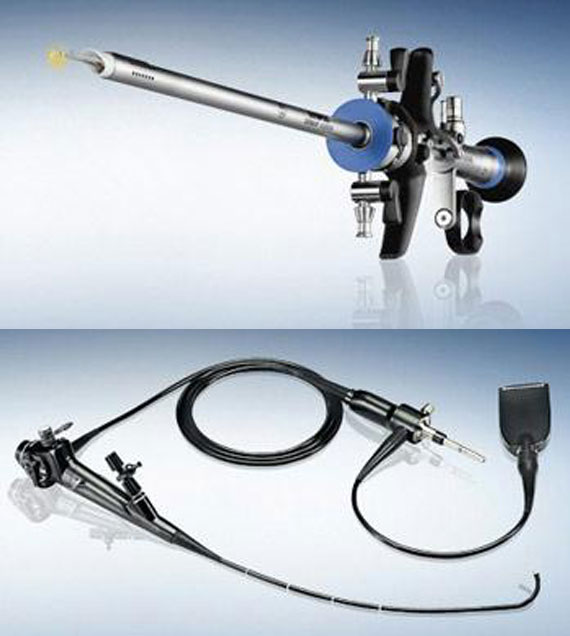Endoscopic surgery is when a procedure is performed via a natural passageway, with no skin incision required. For urology this means procedures that access internal organs by passing in the opposite direction to urine. Procedures are named after the ‘end point’ they reach:
Urethroscopy: Urethra
Cystoscopy: Bladder
Ureteroscopy: Ureter
Pyeloscopy: Renal pelvis of the kidney
Endoscopic procedures can be used for diagnosis and treatment for conditions inside the urinary tract.
Diagnosis
Diagnosis always involves visualising the internal surface and sometimes requires the removal of tissue. Common problems that require a diagnostic endoscopy include: Haematuria, painful bladder syndrome, urinary incontinence and voiding dysfunction.
Treatment
The equipment used to visualise the internal surface of the urinary tract have special channels that allow for instruments to be inserted. These instruments allow for certain procedures to occur including: Biopsy, resection, laser, injections, basket extraction.
If the disease process is diffuse (like a red patch), only a small sample is taken (biopsy). If the disease process in a growth, the whole lesion (or a significant portion of it) will be removed (resection). Common conditions treated with an endoscopic approach include: Kidney stones, bladder stones, prostatic enlargement, bladder cancers, painful bladder syndrome, urinary incontinence.

